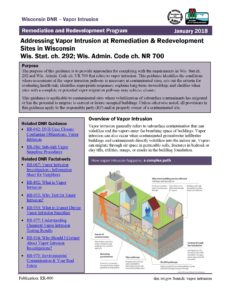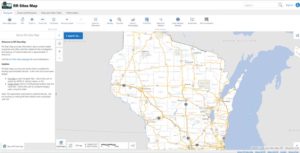Already a national leader in cleanup and redevelopment projects, the Wisconsin DNR’s RR Program is about to gain some additional national attention when hydrogeologist David Swimm co-presents a webinar in February with the US EPA’s Office of Underground Storage Tanks (OUST).
The webinar will present various case studies which demonstrate how to apply high resolution site characterization (HRSC) strategies using direct sensing geophysical tools deployed through direct push technologies (DPT) and interpretive techniques to support and improve remediation decisions at sites.
David will present this HRSC webinar along with Tom Kady, and environmental engineer with the US EPA’s Environmental Response Team. Swimm holds BS and MS degrees in Geology from the UW–Madison and West Virginia University, respectively. His graduate work at WVU emphasized geophysical detection of shale gas reservoirs and seismic signal analysis. Following 12 years working in the oil and gas industry, David spent the last 23 years working as a professional hydrogeologist in Wisconsin; first, for private consulting firms specializing in landfill and industrial waste investigations and clean-ups, and later for several state agencies.
Swimm currently works for the DNR’s Policy and Technical Resource Section with the RR Program, specifically addressing detailed NAPL delineation and remedy selection.
This online training is part of OUST’s broader effort to provide technical assistance and ensure that states and tribes are successful as they continue to clean up leaking underground storage tank (LUST) sites.
The webinar will be held on Tuesday, February 20, from 1:00 – 3:30 p.m. CST. Registration is currently open and is accessible at https://clu-in.org/conf/tio/HRSC/.
The webinar will be archived on the Clean-Up Information (CLU-IN) website.
Any questions about the webinar can be directed to Queenie Mungin-Davis at the US EPA (mungin-davis.queenie@epa.gov or 202-564-0685).


